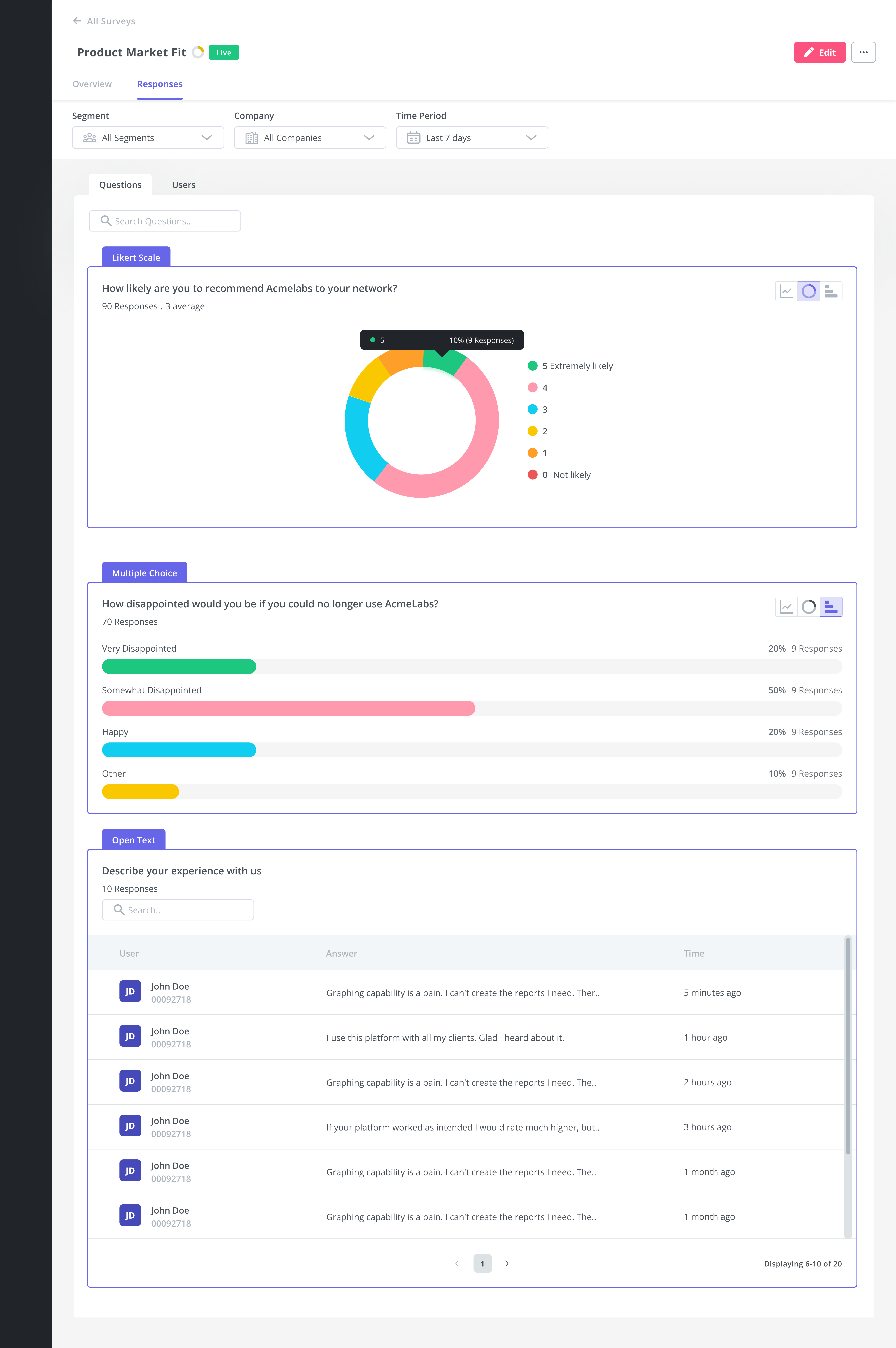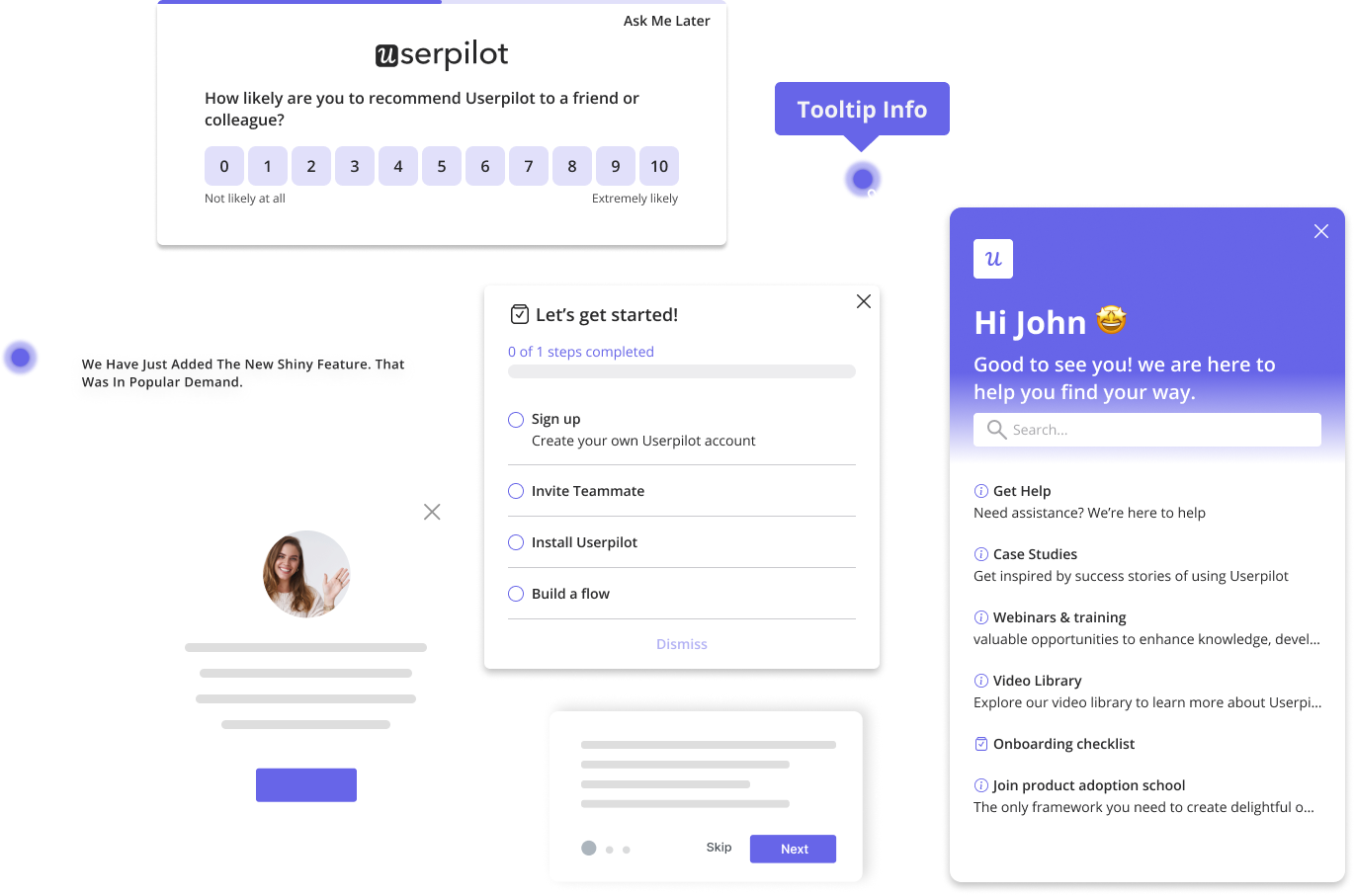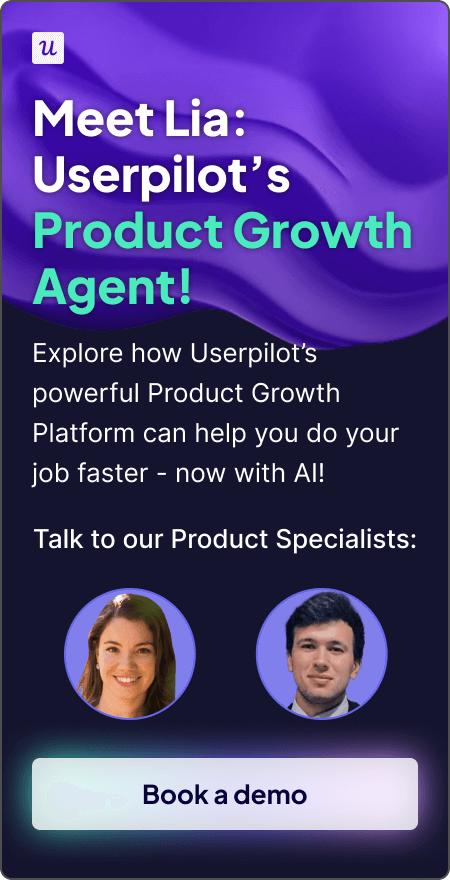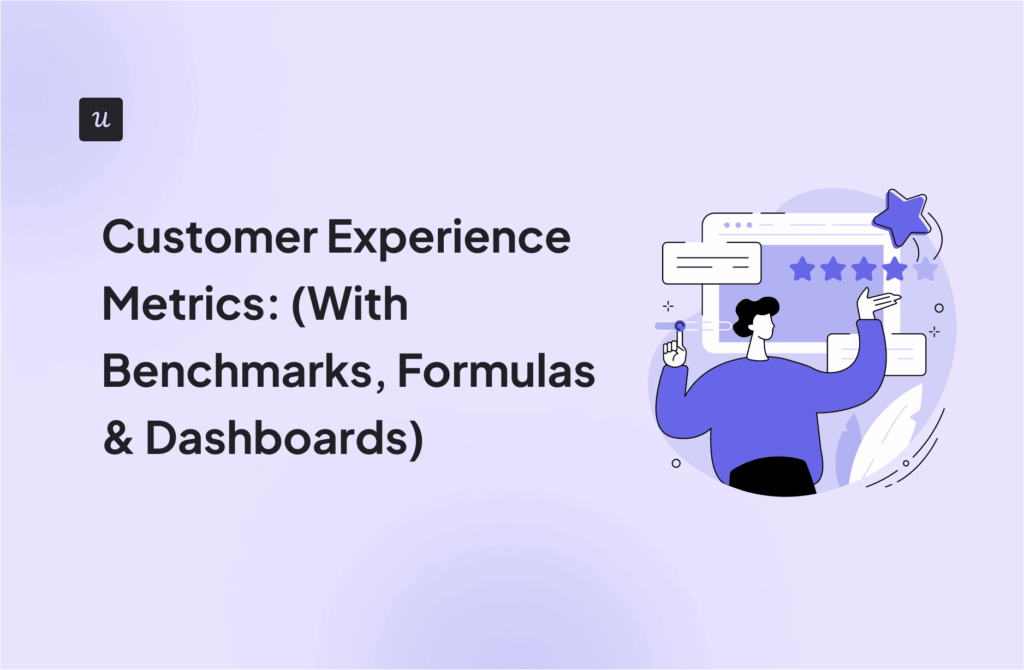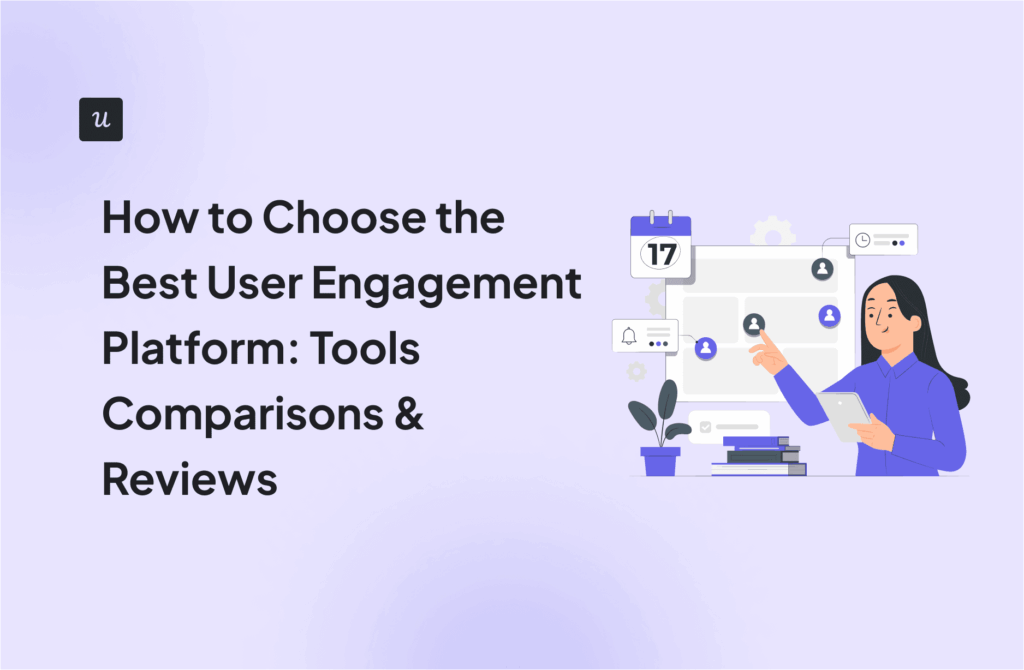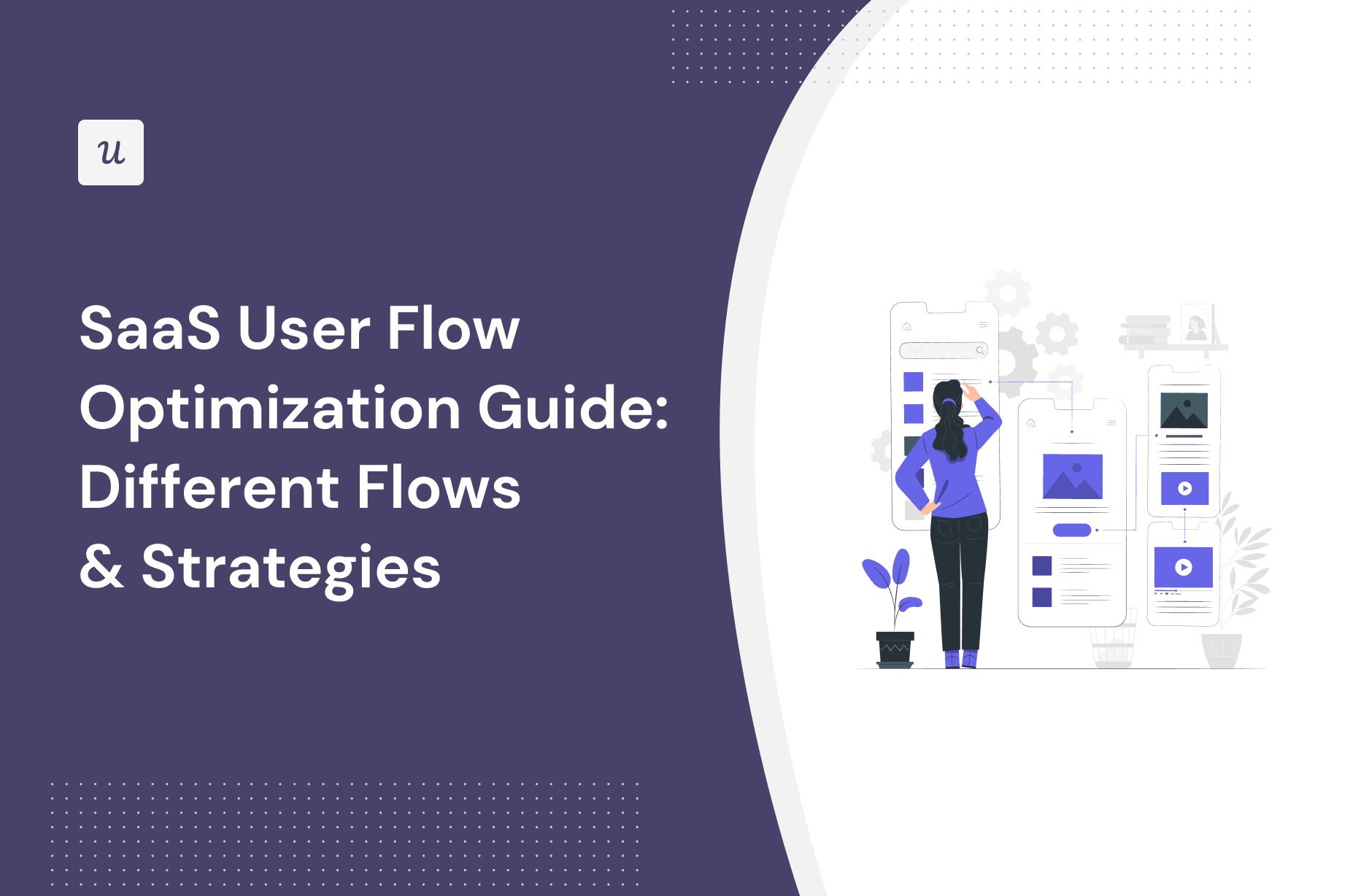
How do you conduct SaaS user flow optimization to increase the effectiveness of your product-led growth initiatives?
This is the main question that the article tackles, so if you’re after the answer, I’ve got you covered.
Try Userpilot Now
See Why 1,000+ Teams Choose Userpilot
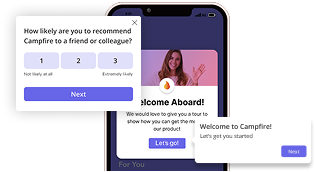
What is a SaaS user flow?
A user flow in SaaS is a sequence of steps that the user goes through within a product to achieve a goal.
For example, the diagram below illustrates a banking app login flow. It shows all the possible actions that the user may need to take to log in.

Different types of user flows in SaaS
Examples of user flows at different stages of the user journey include:
- Sign-up flow
- User onboarding flow
- Secondary onboarding flow
- User activation flow
- New feature adoption flow
- Upgrade and upsell flow
- Offboarding flow
How to create user flows to deliver a positive user experience
Ready to start creating and analyzing user flows for your SaaS product?
Here’s a quick step-by-step guide!
Perform user research and define your user personas
The process starts with user research. After all, you need to know who you’re building the flows for.
What tools can you use to gather the necessary data?
Typical sources of insights include:
- Product analytics
- Interviews and focus groups
- Surveys and questionnaires
- User testing sessions
The outcome of user research should be a list of user personas, along with their JTBDs, pain points, goals, benefits of using the product, company details, and team collaboration information.

Map user journeys for different personas
Some of the user flows, like the sign-up flow, will be identical for all user personas, while others, like the onboarding flow, might be tailored to their unique needs.
That’s why the next step involves mapping out the user journeys for each user persona.
This includes outlining:
- Key stages of the journey.
- Touchpoints – and how users interact with them.
- Feelings.
- Challenges.
To help you create user journey maps and user flow diagrams, tools like Miro or Canva are priceless.

Analyze user behavior to identify drop-offs and friction points
Once you have the maps ready, you can start the analysis to find areas for optimization.
It’s good practice to start with a high-level analysis to identify the main areas where users experience friction.
Funnel analysis is the tool to use as it allows you to visualize where users drop off in the user journey and how long it takes them to convert. If you can see a massive drop-off rate or delay at a particular stage, that’s where friction is.
Next, conduct a more granular analysis of user behavior to find the root causes using techniques like session recording analysis.

Optimize user flows with analytics insights
So you know why users experience friction in their journey?
Excellent! Just need to optimize the flow to increase the completion rate.
How you do it depends on the cause or the kind of flow you’re optimizing.
For instance, if you’ve just introduced a new feature, like our new Dashboards, but users are struggling to activate it, you can create a walkthrough guiding users through its functionality.

Best practices for optimizing different user flows
How else can you optimize user flows? Here are a few ideas.
Simplify the sign-up process
Make the sign-up as simple as possible to allow users to start using the product as quickly as possible. The more you delay the moment, the longer it takes them to experience value, and the more likely they’re to churn.
So, remove all unnecessary steps. For example, you don’t need email confirmation at this stage. Instead, ask for it later, once the user is already taking the product for a spin.
Another strategy:
Enable Single Sign-on (SSO) so that user can use their existing social or email accounts to log into the product.

Make the user interface intuitive
One thing that can stop users from completing flows is poorly designed UI.
How can you avoid it?
- Keep the design simple – focus on core features and eliminate anything that doesn’t add value to avoid overwhelming users. Canva’s dashboard is a perfect example.

- Make sure that the layout and navigation are consistent – so that users know what to expect no matter which screen their viewing.
- Organize information and features logically – so users to find them easily.

- Make the design inclusive and accessible for users with unique needs, like disabilities. Check out Asana’s color palette, which was simplified for this very reason.

Tailor user flows to their end goal
One reason why Canva’s dashboard I mentioned above is so effective is that it’s personalized to user needs.
When you first join the product, you complete a short welcome survey that asks you about your role and your goals. Based on that, Canva customizes the dashboard by adding shortcuts to the most relevant templates.
What else should you personalize for different use cases?
User onboarding is an obvious one. As each user persona has different goals, they need different features to achieve them. To help them discover the features in less time, create a unique flow for each of them and trigger them based on their responses to the welcome survey.

Use checklists to guide users through the activation flow
Checklists are excellent means of user activation. They’re clear, easy to follow, and tap into our strong psychological need to complete tasks we have planned. And the further down the list you make it, the stronger the desire to crack on.
Again, you may need different checklists for different user segments.
Let’s take a fitness tracking app, like TrainingPeaks, which is used by both athletes and coaches.
To start using the app, an athlete needs to connect their fitness device to the app and synchronize workouts.
The coach, on the other hand, needs to invite athletes to connect their accounts and create a dashboard.

Optimize the user journey based on user feedback
Collecting user feedback allows you to gather valuable insights on how to improve the user flows.
Especially, in-app surveys are a good tool for the job because you can trigger them at the very moment a user completes a flow – or drops off.
When designing your survey, include both closed- and open-ended questions to collect quantitative and qualitative data.
For example, you can ask users to rate the onboarding experience on a scale first, and then follow up with a question, ‘How can we improve the onboarding experience for you?’.
Make the open-ended questions optional, though. Otherwise, the response rates may not be high enough.

Couple new feature announcements with interactive walkthroughs
A new feature announcement is not much use when it comes to feature activation.
Why?
Because it doesn’t show how to use the feature.
Unless you back it up with an interactive walkthrough.
Have a look at this modal announcing the Trends Report Builder feature. It provides information on how to start using the feature, but it’s the CTA button at the bottom that matters the most.

Clicking on the button triggers a walkthrough made up of tooltips that show users where to find the feature.

The tooltips also contained information about the benefits of the feature to bring them closer to the Aha! moment.

Understand user interactions with main features to effectively prompt secondary onboarding flow
To avoid overwhelming users, introduce your features gradually. Start with the essential ones necessary to activate users and only then introduce more complex ones.
How do you know that users are ready for more advanced features?
Track their engagement with the basic features.
This may be a bit tricky if they have to use the feature a few times to adopt it and use it competently though. If that’s the case in your product, creating custom events made up of multiple user actions can help because you can track them as one.
Once the user completes the adoption event, you can automatically trigger secondary onboarding flows to introduce new features.

Deliver contextual upsell prompts
Another great application of event-based triggering is for upsell messages.
These work in a very similar way to secondary onboarding:
- Users complete a series of actions indicating they’re ready to upgrade.
- This triggers a message highlighting the benefits of upgrading and prompting them to do so, like the Asana modal below.

Automatically trigger an offboarding flow and offer alternatives
And what if the user decides to cancel their subscription?
There are two things you can do here:
- Collect feedback on their reasons.
- Offer an alternative solution, for example, a cheaper plan or a discount.
And guess what? These flows are also triggered contextually when the user hits the cancel button.

How to optimize user flows with Userpilot
Userpilot is a product growth platform built for SaaS user flow optimization. It offers powerful analytics and feedback features, as well as the user engagement layer.
Let me explain how you can leverage its capabilities.

Create user flows with different UI elements
With Userpilot, you can create 6 different UI patterns you can use to engage users:
- Tooltips – a rectangular message that appears when you click on a feature or hover over it, used for contextual guidance, either individually or as a part of interactive walkthroughs.
- Modals – larger than tooltips, pop-up windows, great for announcements.
- Banners – ribbon-like messages at the top or bottom of the screen, handy for notifications and announcements.

- Hotspots – used to attract user attention to a particular feature or UI element.
- Checklists – to drive user activation.

- Resource center – a collection of resources for on-demand support 24/7.

Use advanced product analytics for analyzing user behavior
When it comes to product analytics, Userpilot isn’t a pushover.
Here are the main features:
- Path analysis – allows you to visualize all user interactions leading up to or following an event, which is perfect for user journey mapping and in-depth user conversion analysis.

- A/B testing – to make data-driven choices of the best-performing flows and UI patterns.

Collect and analyze user feedback
While analytics can help you understand what users do, you often need their feedback to understand why. Fortunately, collecting feedback with Userpilot is dead-easy.
- Thanks to the template library, you don’t have to create surveys from scratch. Just customize them in the visual editor.

- NPS dashboard – the dedicated NPS dashboard provides you with all the survey results in one place. You can also tag the qualitative responses to spot patterns in user sentiment more easily.

- Survey analytics – even more granular survey analytics.
Conclusion
User flow optimization in SaaS products is essential to create a positive user experience and enable users to achieve their goals. This leads to higher customer satisfaction, retention, and loyalty. And loyal users tend to spend more during their lifecycle.
To learn more about SaaS user flow optimization with Userpilot, book the demo!

